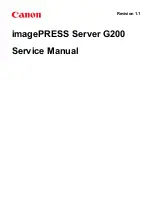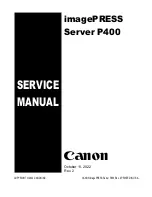
Chapter 9: MediaStore 5100 and 5000 series hardware reference
• Check that the local ambient environment temperature is below the given specifications.
• Check the installation for any airflow restrictions at either the front or rear of the MediaStore. A
minimum gap of 25 mm at the front and 50 mm at the rear is recommended.
• Check for restrictions due to dust build-up. Clean as appropriate.
• Check for excessive re-circulation of heated air from the rear to the front. Use of the MediaStore in a
fully enclosed rack is not recommended.
• If possible, shutdown the MediaStore and investigate the problem before continuing.
Related information
MediaStore5100 and 5000 series specifications
on page 215
Overview of proactive drive alarming and removal
The proactive drive alarming and removal feature enhances the ability of Spectrum to detect and recover
from various drive error conditions, while minimizing disruption to the system.
Certain drive error conditions can cause the system to attempt to mark a drive as bad and remove it from
the associated RAID Set. Since failing an active drive in a RAID Set can cause the RAID Set to become
compromised, several checks are done prior to failing the drive. A drive is removed from the RAID Set
when the following conditions are true:
• The File system has been started.
• All drives in the RAID Set are on-line and ready.
• No other drives in the RAID Set have bad blocks.
• A hot spare is available to start a rebuild on the RAID Set.
• The target drive is a hot spare or belongs to a RAID Set that is not compromised, rebuilding, or is the
rebuild target.
Additional drive conditions that prevent a drive from being auto-failed include:
• The drive is in the process of a bad block repair.
• The drive is in the process of a drive firmware upgrade.
• The drive is being formatted.
NOTE:
For
Persistent Login Failures
and
Insubordinate Disks,
the conditions
mentioned above do not apply. Drive are auto-failed regardless of the state of the file
system or other drives in the drive’s RAID set.
Disk read/write errors can be either persistent or intermittent:
•
Persistent Errors
: An error at the same disk drive address that recurs at least 5 times on writes or 10
times on reads. This error is sometimes referred to as a “
Hard
Error”.
•
Intermittent Errors
: An error that the same disk drive address that recurs less than 5 times on writes
and less than 10 times on reads. This error is sometimes referred to as a “
Soft
Error”.
The SystemManager application reports on the following drive error conditions:
• SMART Warnings: Critical alarms (red) are generated for any drive that issues a SMART warning.
Drives that exhibit SMART warnings will attempt to be auto-failed by the Spectrum server and should
be replaced as soon as possible.
• Hardware Errors: Critical alarms (red) are generated for any drive that issues a Hardware error. Drives
that exhibit hardware errors will attempt to be auto-failed by the Spectrum server and should be
replaced as soon as possible.
212
















































